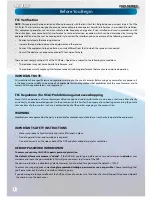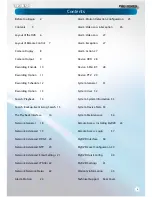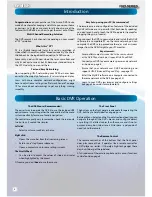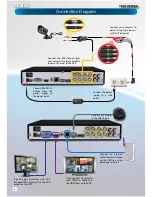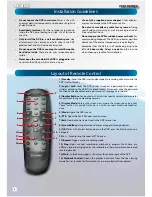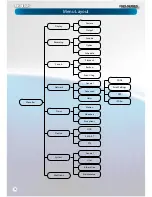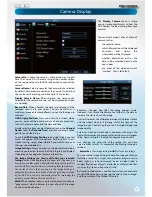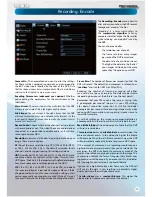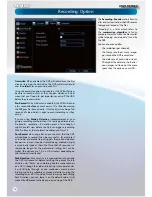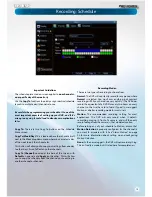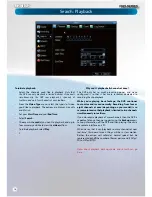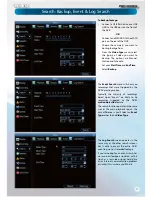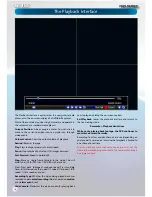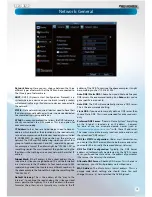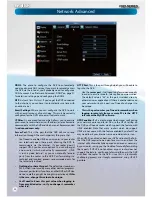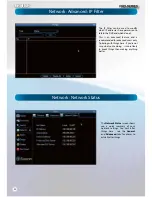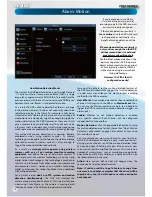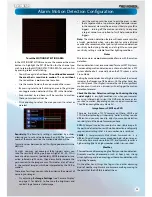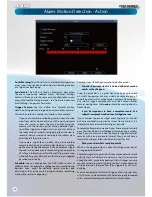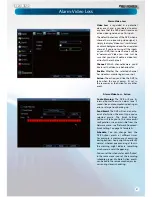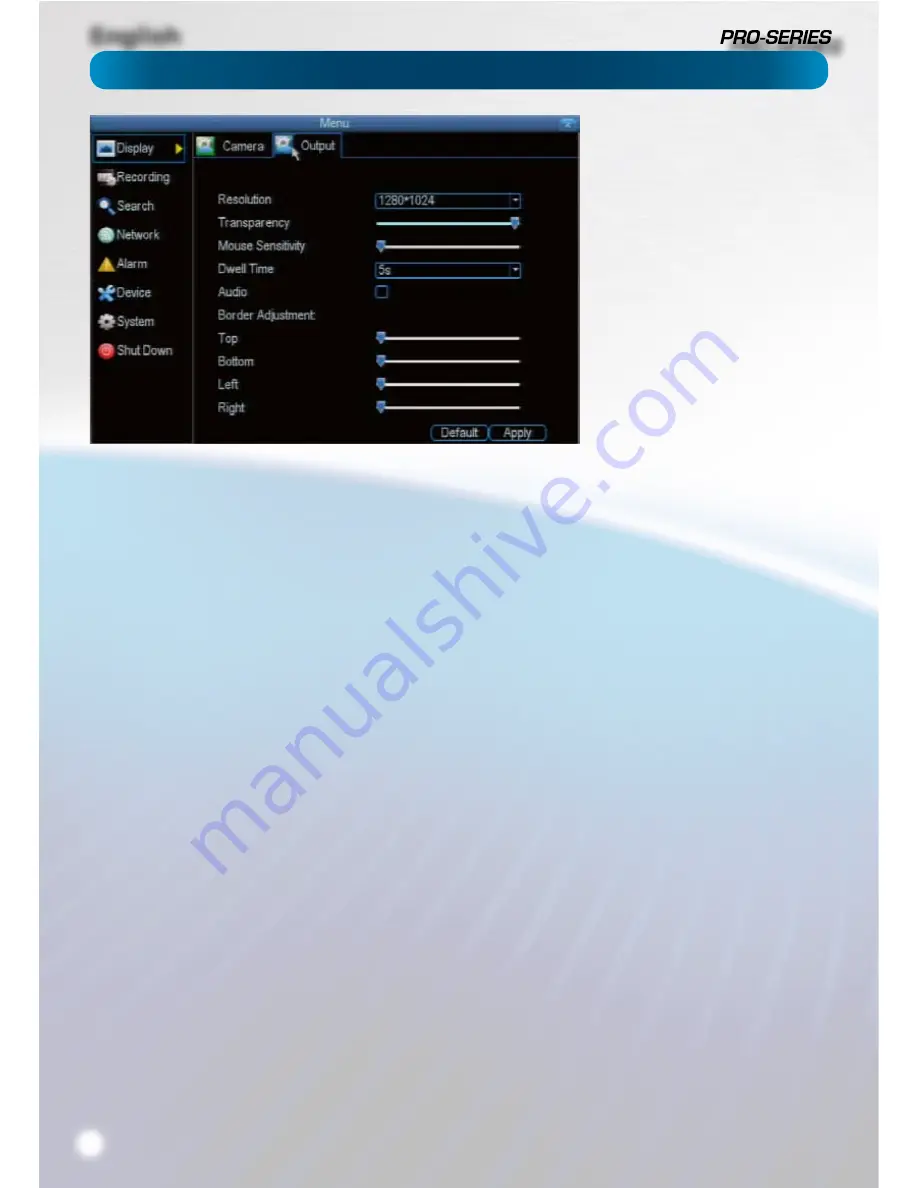
English
12
The
Camera: Output
menu is where
you can control how the DVR is going
to deliver an image to your television,
screen or monitor.
You’ll be able to adjust such items as:
t
screen resolution and position on
your monitor
t
the audio output,
t
the appearance of the menus,
t
the auto-sequence dwell time, and
t
the sensitivity of the USB mouse.
Resolution:
The number of “little dots” that make up an
image. This should be set as high as possible, but equal to
or lower than the maximum resolution your screen/monitor
can display. Things change a little depending on what
kind
of
monitor you’re using, and how it’s connected.
The DVR has four formats available, in two di
ff
erent aspect
ratios:
Square (4:3) - 1024 x 768 or 1280 x 1024
Widescreen (16:9) - 1280 x 720 (720p) or 1920 x 1080 (1080p)
Square Monitor via VGA:
Use one of the 4:3 formats to
correctly align the DVR’s output on your screen. Using a
widescreen format will “stretch” the image vertically.
Widescreen Monitor via VGA:
If possible, use the widescreen
(16:9) format. If your monitor can’t display that resolution, you
might need to enable letterboxing on your monitor and use a
4:3 format.
PC Monitor via HMDI:
Choose a format appropriate for your
monitor. If it’s a widescreen, use a widescreen format. Set to
the higest option that is
equal to or less
than the screen’s
maximum resolution.
Widescreen Plasma/LCD HDTV via HDMI:
The resolution
should be set to the maximum your television can
process
not
display
. Typically, this will be 1080p, as even screens which
don’t have that many pixels can still display the image, just
with less detail. Check your television’s documentation to
learn this value. If your television can’t display 1080p, then use
720p instead.
Transparency:
You can set the DVR’s menus to be partially
transparent (see-though) - in case you need to keep an eye on
things while adjusting settings (or it makes you feel like you’re
living in the future because it’s so tech - we don’t judge). The
best way to set this is to simply experiment over time and see
what works well for you.
Mouse Sensitivity:
How sensitive the mouse will be. On
lowest, large and dramatic arm movements are required to
move the mouse but a few inches onscreen. At the other end
of the spectrum, a tiny bump or knock can send the cursor
one side of the screen to the other. Try somewhere around the
lower end for starters, and then increase it little by little if it’s
moving too slowly.
Dwell Time:
How long channels will be displayed when using
auto-sequence mode.
Audio:
Whether the DVR will output an audio signal. When
checked, the DVR will output audio to a compatible device
(via the HDMI or the RCA Audio Output). When unchecked, the
DVR will not output an audio signal at all.
Border Adjustment:
Changes the size and position of the
DVR’s images on the screen. Altering the border size can be
useful if you’ve got parts of the DVR’s image extending beyond
the part of the screen you can see.
The border adjustment is much more likely to be required for
older, CRT computer monitors connected via the VGA output.
HDMI should (in theory) automatically adjust the DVR’s image
to perfectly
fi
t your screen.
Camera: Output
Содержание PRO-series
Страница 1: ...English 1 4 8 Channel D1 Realtime H 264 DVR M4 8 3000 4000 230412E English ...
Страница 5: ...English 5 ...
Страница 44: ...English 44 ...
Страница 45: ...English 45 ...


